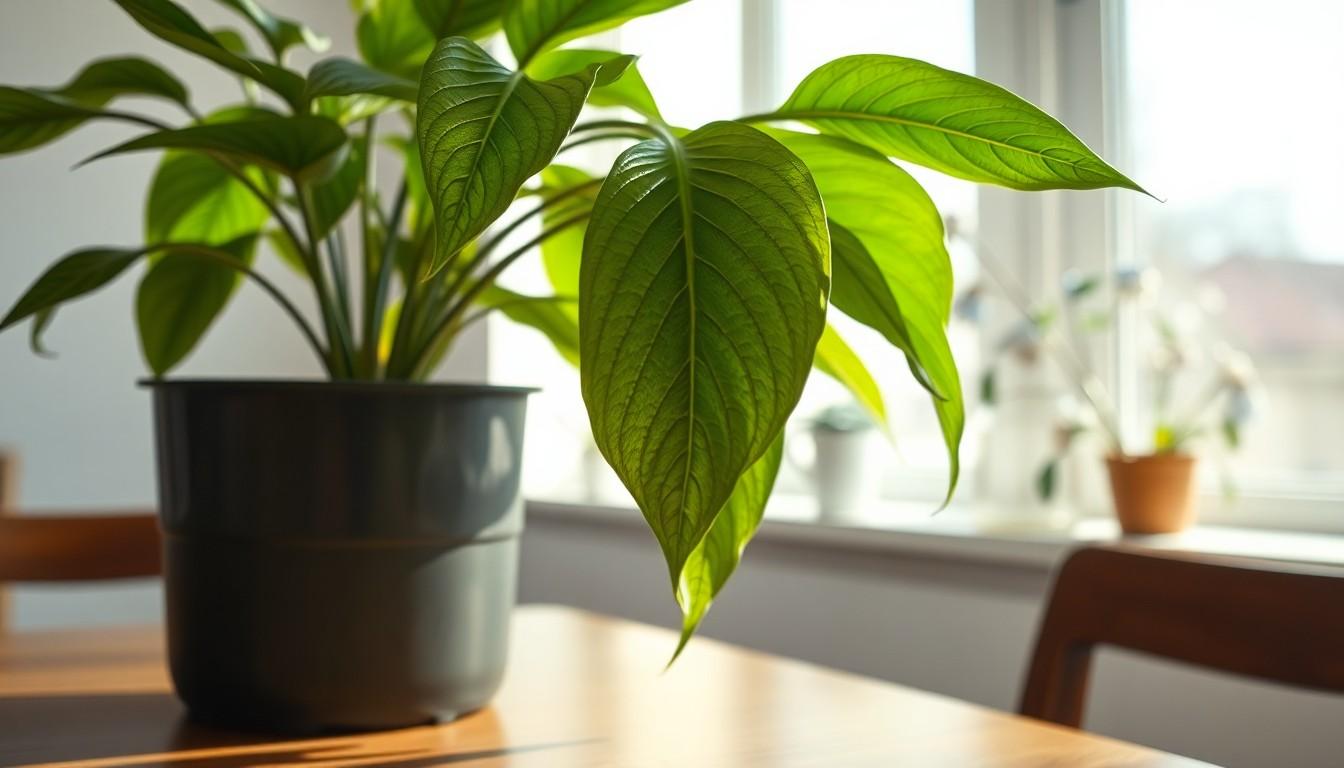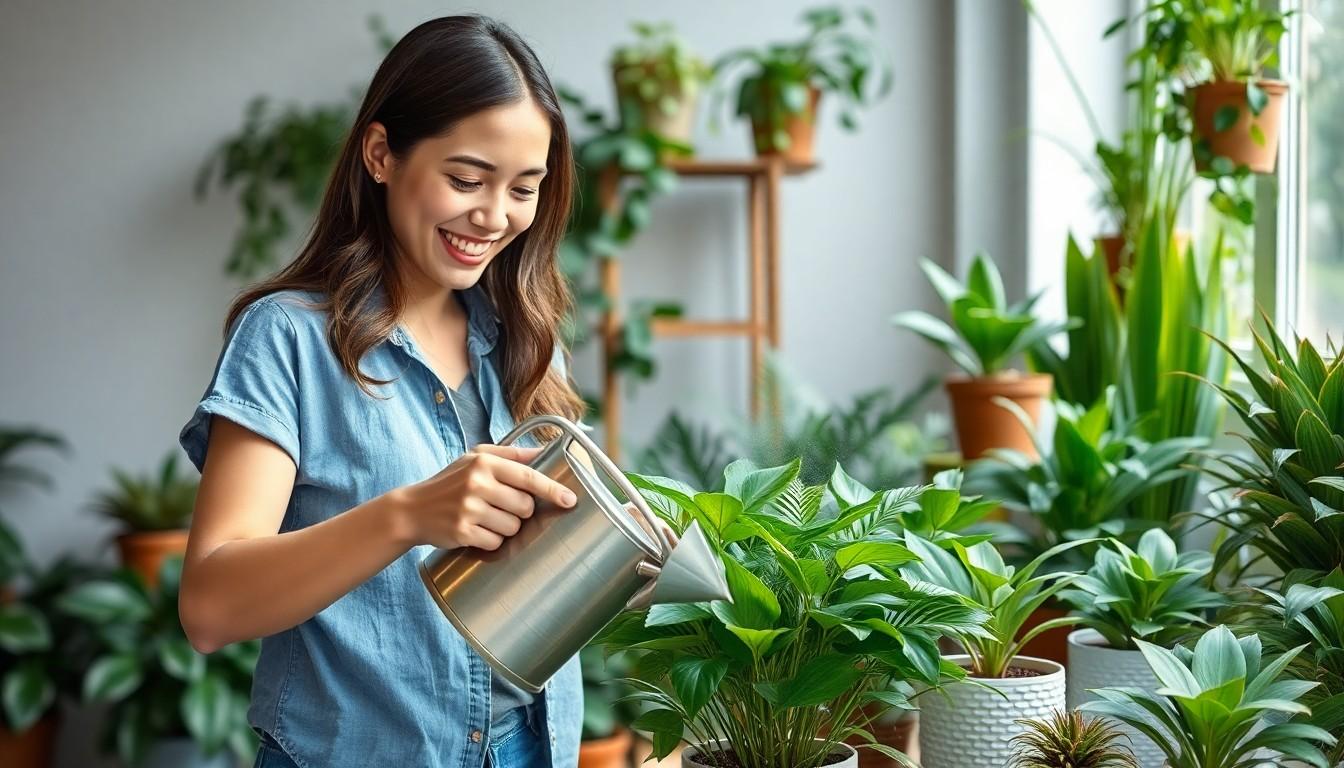House plants can be the perfect companions, adding life and color to any space. But let’s face it, keeping them alive sometimes feels like a game of survival of the fittest. So, how often should you water these leafy friends? It’s not as simple as filling a cup and pouring it in. Overwater them and they’ll drown; underwater them and they’ll wither. It’s a delicate dance that can leave even the most seasoned plant parent scratching their head.
Understanding Plant Watering Needs
Determining how often to water house plants requires an understanding of specific needs. Watering frequency depends on several factors.
Factors Affecting Watering Frequency
Plant species significantly influence watering frequency. While some plants thrive on consistently moist soil, others prefer drier conditions. Environmental conditions, like humidity and temperature, also impact how quickly soil dries. A warm, sunny room may require more frequent watering compared to a cooler, shady space. Potting materials play a role too; porous pots allow for faster evaporation. Lastly, the plant’s growth stage matters; actively growing plants typically need more water than those in dormancy.
Common House Plant Types
Different house plant types have unique watering needs. For instance, succulents like jade plants and aloe vera require fewer waterings due to their water-storing capabilities. In contrast, peace lilies demand more frequent moisture, thriving in consistently damp soil. Spider plants and pothos prefer moderate watering, enjoying periods of drying out between sessions. Fiddle leaf figs benefit from a weekly watering routine, especially during growing seasons. Recognizing these distinct preferences promotes healthier house plants.
Signs Your Plant Needs Water

Recognizing when a house plant needs water proves essential for maintaining its health. Several indicators point to a plant’s need for moisture.
Visual Cues
Leaves often display noticeable changes when a plant becomes thirsty. Leaves may droop or curl inward, signaling that the plant lacks sufficient water. Additionally, discoloration might occur, such as yellowing in some types of foliage. Brown tips also appear when plants experience dehydration, particularly in more sensitive species. Spotting these signs early helps prevent further stress and promotes healthier growth.
Soil Moisture Indicators
Checking soil moisture levels provides crucial insights into a plant’s needs. Dry soil often indicates that it’s time for watering. Using a fingertip test, inserting a finger into the soil helps determine moisture presence; if it feels dry up to the first knuckle, the plant likely requires water. Conversely, soggy soil indicates overwatering, which can lead to root rot. Monitoring these soil indicators ensures that plants receive adequate hydration while avoiding potential damage caused by excess moisture.
General Watering Guidelines
Proper watering techniques ensure house plants thrive and maintain health. Understanding specific needs prevents issues associated with both overwatering and underwatering.
Frequency for Different Plant Types
Different plant types require varying watering frequencies. Succulents and cacti prefer dry soil and need watering every 2-4 weeks. Tropical plants, such as pothos and ferns, thrive on more moisture, needing water every 1-2 weeks. Flowering house plants like African violets appreciate consistent moisture and should be watered weekly. Adjustments for individual plants can enhance growth and health. Observing the plant’s condition, such as leaf appearance, assists in determining watering needs.
Seasonal Considerations
Seasonal changes significantly influence watering schedules. In spring and summer, plants generally require more frequent watering as temperatures rise. Indoor heating during winter often leads to drier conditions, necessitating adjustments to watering frequency. For most house plants, weekly checks can help maintain adequate moisture levels. Noticing signs of stress during seasonal transitions can also guide watering practices. Each plant’s growth stage, alongside environmental factors, will dictate when it needs a drink.
Best Watering Practices
Watering house plants involves specific techniques and appropriate tools that enhance plant care. Following effective methods keeps plants healthy and thriving.
Techniques for Efficient Watering
Watering from the base encourages strong root growth. This method allows roots to absorb moisture without risking over-saturation of leaves. To achieve thorough hydration, use a slow, steady pour, ensuring water reaches the bottom of the pot. Observing the potting soil’s response aids in determining watering adequacy; moist soil can indicate sufficient hydration. Adjusting watering frequency according to plant growth stages yields better results. A regular schedule does contribute to consistency, but flexibility is key, as some plants may prefer drying out between waterings.
Tools and Equipment to Use
Using watering cans with long spouts facilitates precision, directing water exactly where needed. Soil moisture meters provide invaluable insights, offering a clear gauge of soil hydration levels. Utilizing a spray bottle enables gentle watering for sensitive plants that prefer higher humidity. For larger plants, consider using a watering wand to extend reach and ensure thorough coverage. Keep a drainage tray underneath pots to catch excess water and protect surfaces. Taking advantage of these tools contributes to optimal plant health and efficient watering practices.
Conclusion
Caring for house plants requires a keen understanding of their unique watering needs. By paying attention to specific cues and environmental factors, one can maintain a healthy balance that promotes growth.
Utilizing the right techniques and tools can make a significant difference in how effectively a plant receives hydration. Regular monitoring and adjustments based on seasonal changes ensure that plants thrive throughout the year.
Ultimately, developing a routine that aligns with each plant’s preferences will lead to a flourishing indoor garden. With patience and care, anyone can cultivate a vibrant collection of house plants.

